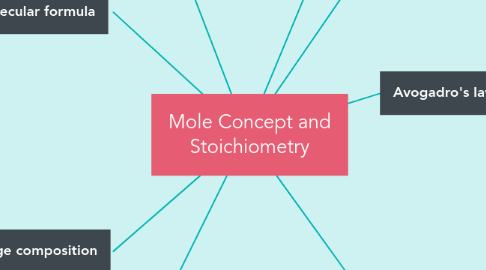Mole Concept and Stoichiometry
저자: Udayalakshmi Bhamidipalli


1. MF = (EF)n
2. Empirical and molecular formula
2.1. Empirical formula - gives the simplest ratio of the atoms of elements in a compound.
2.2. Mol. formula - gives actual ratio of atoms of elements in a compound.
2.3. 1. Identify the elements
2.4. 2. note down % composition
2.5. 3. note down at. mass
2.6. 4. AR = %comp/at. mass
2.7. 5. SAR = AR/least AR
2.8. 6. Round off SAR to the closest whole no.
2.9. n = RMM/EFM
3. Percentage composition
3.1. Find RMM
3.2. Mass of element x 100 / RMM
4. Mass-mass and volume -volume relationship
4.1. Identify the compounds related
4.2. Find RMM of compounds if mass is given/ asked for
4.3. Remember to use stoichiometric coefficients from the balanced eqn.
4.4. If vol is given or asked, use molar volume, multiply with appropriate stoichiometric coefficient.
5. VD = RMM/2
6. Gay Lussac's law
6.1. Gases react in volumes bearing simple whole no. ratio to each other and gaseous products.
6.2. Numericals - identify vol. ratio and calculate for given volume
6.3. identify limiting reagent if any when volume of unused gas/ composition of resulting mixture is asked.
7. Avogadro's law
7.1. Equal volumes of all gases - same no. of molecules.
7.2. VD = mass of certain vol of gas/ mass of same vol of H2
8. Mole concept
8.1. RMM - No. of times one molecule is heavier than 1/12th the mass of C - 12.
8.2. one mole
8.2.1. 22.4 litres = 22400cm3
8.2.2. 6.023 x 10^23 particles
8.2.3. 1 RAM/ 1 RMM in grams
8.2.4. same no. of particles as atoms in 12g C- 12
8.3. Molar volume
8.3.1. 22.4 litres = 22400cm3
8.3.2. volume occupied by 1mole of gas at STP
